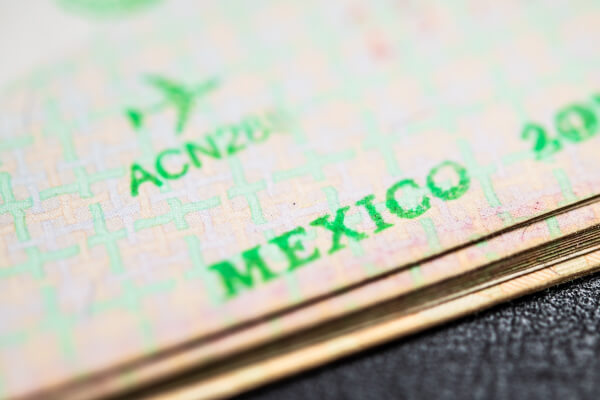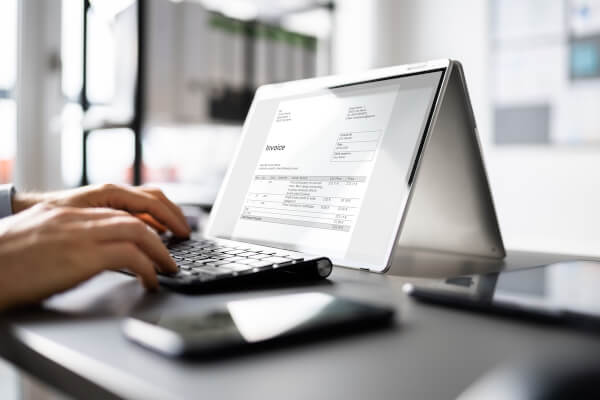Hiring Independent Contractors in Canada: A Complete Guide for Businesses
Learn how to hire independent contractors in Canada. Understand legal rules, tax responsibilities, and how to avoid misclassification with this guide.

With logistics and supply chain management only becoming increasingly intricate, many turn to third-party logistics (3PL) warehousing. But what exactly is 3PL warehousing, and why do 90% of Fortune 500 companies use it?¹
Trustpilot: 4.4/5 average rating
Over 300k+ businesses customers use Wise globally
| Table of Contents |
|---|
Third-party logistics warehousing is a service that helps companies manage their supply chain more efficiently. Basically, it's like having a warehouse partner that takes care of your storage, inventory management, and shipping needs.
3PL is a term used to describe outsourcing logistics and supply chain management activities to a third-party provider. In other words, a company can contract with a 3PL provider to handle various logistics functions, such as transportation, warehousing, and fulfillment.
3PL encompasses a wide range of services, including inventory management, order fulfillment, packaging and labeling, transportation management, and customs brokerage. Essentially, any function related to getting products from the manufacturer to the end customer can be handled by a 3PL provider.
Here's how it works: a company contracts with a 3PL provider to handle all or part of their logistics needs. The business then orders or makes their products and ships the finished products to the warehouse. Afterward, the provider then takes care of tasks such as storing inventory, managing orders, and shipping products to customers. They use their expertise, resources, and technology to optimize the supply chain and ensure that everything runs smoothly.²
The services you get with a 3PL provider are often similar or the same as order fulfillment companies. Here are some of them below:
Warehousing and storage
The 3PL provider can store a company's inventory in their warehouse, keeping it safe and secure until it's needed.
Order fulfillment
The 3PL provider can receive orders from a company's customers, pick and pack the items, and ship them out on behalf of the company.
Transportation
The 3PL provider can arrange for transportation of goods from one location to another, whether it's by truck, plane, or ship.
Inventory management
The 3PL provider can track inventory levels, monitor product expiration dates, and manage stock levels to ensure that products are always available when needed.
Kitting and customization
Depending on what your business is all about, certain 3PL providers will be more suitable than others. While some specialize in handling frozen goods, others specialize in bulky, heavy items.
So, who should consider 3PL outsourcing? If your company wants to streamline its supply chain, reduce costs, and focus on their core competencies, you can benefit from working with a 3PL provider. But there are many reasons why a business might want to consider going for 3PL warehousing:
Although “large” is subjective, having any order volume that exceeds what your business can handle is a sign that you might want to consider a 3PL provider. Not only does this mean you’re likely spending too much time on menial tasks and less time on revenue-generating aspects of your business - it also means missing out on growth. Supply chain management is a lot to handle if you don’t have the manpower to do so, nor the time to spare.
When you’re doing self-fulfillment orders, it can be difficult to offer fast, expedited shipping as it can heavily affect your margins. And in this day and age, people desperately want fast shipping - 65% of consumers would pay extra for faster, more reliable deliveries.³ No matter what size your business is, a 3PL can offer this much-needed feature for your shipping and logistics process.
If you have limited office space or fulfill orders from home, there may come a time when you’re running out of space to store inventory. A 3PL can keep things organized and manage your inventory like a breeze, even if your product continues to grow.⁴
See the Best Banks for Small Businesses >>
As with any business decision, there are both advantages and disadvantages to outsourcing logistics tasks to a 3PL provider.
Finding a 3PL warehouse can be like finding a needle in a haystack - it's not as simple as picking out an ice cream flavor. Since it requires more than just a cursory glance at what’s available, be sure to consider the following before you start working with a 3PL partner. We’ll also go through some steps you can follow and valuable questions you might want to ask.
If you primarily serve customers in a particular region or country, partnering up with a 3PL provider that has a warehouse in those locations can cut down on shipping times and costs. You don’t want your customers to have to deal with long shipping times and high costs.
The nature of your products and the needs of your target market should also inform your decision. For example, if you sell perishable goods, you'll need to work with a 3PL provider that has specialized refrigeration and handling capabilities.
You should also consider the reputation of the 3PL provider. Check out reviews, testimonials, and industry certifications, as these factors can provide insight into how reliable that provider really is.
Fulfillment services encompass the entire order fulfillment process, including picking, packing, and shipping, and can be particularly useful for your business if you lack the infrastructure or resources to handle these tasks in-house.
If you do require fulfillment services, you'll need to ensure that the 3PL provider you go for has ample experience and expertise in this area. Do they have the technology and procedures necessary to manage inventory levels effectively, process orders efficiently, and deliver timely updates to customers?
But if you’re more than capable of handling all these things yourself, consider a 3PL warehouse that focuses on other areas, such as transportation, warehousing, or inventory management.
3PL warehouses don’t exactly have the most simple pricing structure, so you’ll want to learn more about how fees and prices work in this realm.
Typically, 3PL providers charge fees for storage, handling, and transportation. The storage fee will likely (but not always be) based on the amount of space your goods take up in the warehouse while handling fees cover the costs of receiving, processing, and preparing orders for shipment. Transportation fees are to do with transporting your products to and from the warehouse.
We’ve touched upon how varied 3PL companies can be, and this applies to costs as well. Depending on what services you need, the type of goods you’re storing, and the location of the warehouse, you can expect different prices. Some providers might also have additional fees for value-added services such as packaging and labeling.
When working with 3PL companies, there’s a chance you’ll need to make cross-currency transfers to pay for their services. This can be a costly and time-consuming process, especially if you're using traditional banking methods or services.
With Wise, you can transfer money internationally at a fraction of the cost of traditional banking methods or PayPal. In addition to offering competitive rates and low fees, Wise Business also makes it easy to manage invoicing and payouts with your 3PL provider. You can set up recurring payments or make one-off transfers with just a few clicks, and our platform provides real-time updates on the status of your transactions.
Start making payments
with Wise Business >>
Free account opening for US-based businesses
By this point, you should have a thorough understanding of 3PL outsourcing and what you can do to start your search. If you’re ready to dive head first and secure a provider, you can go ahead and follow these steps:
As mentioned, the right 3PL provider will depend on what services you need and what your goals are. Consider what products you'll be storing and shipping, how much inventory you'll have, and what kind of shipping and fulfillment options you'll need. This step alone will work to narrow down your search to providers that can meet those requirements.
Now that you’ve got a clear idea of your needs and goals, start researching for a potential 3PL partner. Look for providers that have experience in your industry and offer the services you need. Double-check their reputation by reading online reviews and asking for references. Consider factors such as location, pricing, and special services.
Even though a provider offers all the services you’re looking for, it won’t be worth it if their fulfillment centers aren’t located where you want them to be. You’ll want to know exactly how many centers the provider has and where they’re located in order for you to know that you can provide the fastest and more affordable shipping out there.
Once you've narrowed down your list of potential providers, evaluate their capabilities. Visit their facilities, if you can, to see how they operate and how they handle inventory. Ask about their technology capabilities, such as their warehouse management system and transportation management system, as their technological elements contribute greatly to how seamless everything runs.
Before making that final decision, consider your budget and compare pricing among the providers you're considering. Like many services, there might be hidden fees or additional costs that may not be included in the quoted price.
After evaluating all of the above factors, choose the 3PL provider and warehouse that best meets your needs and fits within your budget. Be sure to read and understand the contract before signing it, and establish clear communication with your provider to ensure a smooth working relationship.
To add to the vetting process, it’s important to ask questions about their warehouses to ensure that they have the capabilities and expertise to handle your inventory the right way. Here are a few examples:
In this FAQ section, we'll address some common questions about 3PLs.
Third-party logistics warehouses are becoming increasingly common around the world as businesses seek to improve their supply chain efficiency and reduce costs. Here are some countries where 3PL warehouses are particularly prevalent:⁷
3PL warehouses can be found in many countries around the world, and they’re likely to continue popping up as businesses look to optimize their supply chains.
When it comes to warehousing and distribution, the big players of the 3PL world are kind of like the superheroes of logistics - they've got the muscle, the reach, and the expertise to take on even the most challenging supply chain problems. These are some of the most popular 3PL warehousing providers that businesses turn to for help getting their products where they need to go:¹⁰
On the topic of getting your products from your warehouse to your customers, there’s also dropshipping. 3PL services generally involve outsourcing one or more parts of the logistics and supply chain process to a third-party provider. The business still owns the products and is responsible for marketing, sales, and customer service, but the 3PL provider deals with the physical logistics of getting the product to the customer.
Dropshipping, on the other hand, is a retail fulfillment method in which the retailer doesn't keep any inventory in stock. Instead, when a customer places an order, the retailer purchases the product from a third-party supplier who ships the product directly to the customer. The retailer never physically handles the product and doesn't own any inventory.
3PL is a great one-stop-shop solution for warehousing and shipping, taking the work out of hiring staff and maintaining your own warehouse. But on the other hand, if you don’t want to deal with inventory and are either exploring or starting a business with limited resources, dropshipping might be the way to go.
Wise Business is a great way to send payments to your 3PL provider. Fees with Wise are convenient and transparent, and if you're sending money across currencies, you can be certain that you’re sending at a lower cost with the mid-market rate.
You’re in good hands. It’s been shown that business payments being sent from Wise are also 19x cheaper than PayPal on average.
Start making payments
with Wise Business >>
Free account opening for US-based businesses
Learn More:
How to Find a Manufacturer in 11 Steps | Small Business Advice
How to find wholesale suppliers, distributors, and manufacturers | Small business tips
How to Find a Manufacturer for a Product: All-in-one Guide
How to Start an Import-Export Business: Complete Guide
Source:
*Please see terms of use and product availability for your region or visit Wise fees and pricing for the most up to date pricing and fee information.
This publication is provided for general information purposes and does not constitute legal, tax or other professional advice from Wise Payments Limited or its subsidiaries and its affiliates, and it is not intended as a substitute for obtaining advice from a financial advisor or any other professional.
We make no representations, warranties or guarantees, whether expressed or implied, that the content in the publication is accurate, complete or up to date.

Learn how to hire independent contractors in Canada. Understand legal rules, tax responsibilities, and how to avoid misclassification with this guide.

Learn how to hire independent contractors in Brazil. Understand tax rules, compliance, contracts, and how to avoid misclassification risks.

Learn how to hire and pay independent contractors in Mexico. This article also includes an FAQ and best practices about working with contractors in Mexico.

Learn how to navigate the overseas worker recruitment. Discover legal requirements, sourcing strategies, visa compliance, and tips for international hiring.

Paying overseas vendors is common, but the hidden costs of B2B cross-border payments aren’t. Learn how to simplify international business payments today.

B2B payment processing doesn’t have to be hard. Learn how growing businesses can simplify cross-border transactions, streamline invoicing and get paid faster.